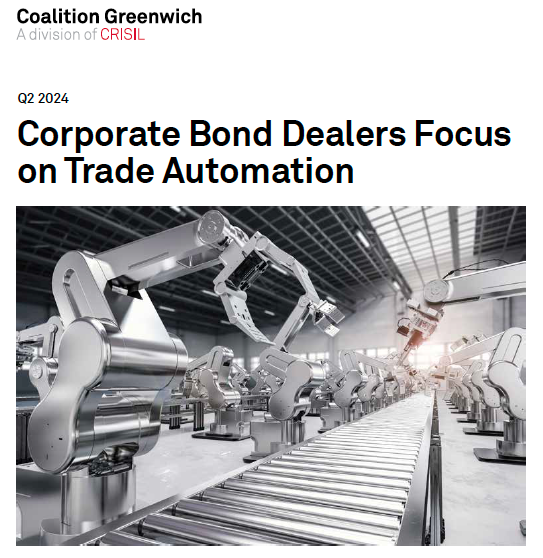APIs - Bridging the Gap
By Godfried De Vidts – Regulatory Affairs Advisor, TransFICC
When I started my career in banking, punch cards from IBM hard coded each transaction. An army of staff prepared piles of such cards to be read by huge machines producing hundreds of pages of bookings. Manual intervention by operational staff checked the handwritten daily cash movements from the traders against these computer generated reports.
Half a century later things have improved, but there is still a huge gap between the front- and back-office, in that trading desks have the most sophisticated tools allowing ever faster and more trading volume. On the operational side a lack of investment has now finally been recognised, not least because of the regulatory reporting requirements imposed on the industry after the meltdown of 2008. Regulators had little insight into the huge financial market volumes, across multiple products. Today's regulatory and prudential reporting requirements seek to remedy this problem.
Innovation for the Front- and Back-Office
That leaves us with the question, how efficient has the industry become while implementing all the new requirements? Can we reduce overhead costs using new solutions now that everybody believes distributed ledger technology can bring us massive benefits? Are financial market institutions, not only banks, but also asset managers, pension funds, insurance companies and others, ready to accept innovative new product offerings that will directly affect their bottom line? Most major banks have embraced new technologies, investing in FinTech developments, as they realised that standing still is actually going backwards. Long gone are the days that each bank developed all necessary systems internally for front-office and operational purposes. This cannot happen in a big bang, but by small incremental steps, embracing little known technologies and solutions that should link the old with the new world in a cost effective, simple and non-duplicative way. Fill the gap….
Regulatory Pressure
There is also pressure from the policy side. The regulatory reforms started in 2008 have seen progress on the banking union, while the other major project from the EU 28 is the capital market union (CMU). A strong desire to shape and strengthen capital market-based investment and financing for the real economy in the EU 27, in the medium and long term is needed. Brexit complicates the picture as two equal infrastructures will sit next to each other, already duplicating today's market solutions.
EMIR and MiFID II have pushed financial markets in the direction of ever more electronic trading. The creation of deep and liquid markets will promote new financing opportunities and investment opportunities in a fluid Single Market. Market infrastructures will further develop facilities to meet supply and demand for financing, both within and across Member states. Although the sell-side has already made massive progress in this area, the buy-side has been slow to accept electronic trading. Participation of buy-side (directly or indirectly) in Central Counterparty solutions (CCPs) will further increase the pressure on smarter solutions, pushing markets deeper into new territory.
It is clear the old ways cannot possibly deliver the efficiencies needed, while avoiding duplicative investment for regulatory reporting demanded by EMIR , MiFIR and SFTR. At the same time CSDR continues to push ahead with a nuclear option of mandatory buy-in's. We cannot simply continue the way we manage our complex world.
With the increase of electronic trading systems and/or other systems for post-trade solutions, the flow of traffic between all market participants becomes untenable. Furthermore, as revisions of regulatory and reporting requirements are not static but continue to evolve, re-writing all those individual flows are costly to adopt each and every time the smallest changes are made. A more advanced solution is needed.
Technology is the Answer
Hidden between front and back office, small but highly important technical solutions are emerging. Take for example the Application Programming Interface (API). An API is a software intermediary that allows two applications to talk to each other. In other words, an API is the messenger that delivers your request to the provider that you're requesting it from and then delivers the response back to you. It is a set of commands (that can be used to send and receive data over a local network or the Internet), functions, protocols, and objects that programmers can use to create software or interact with an external system. APIs have been developed between individual participants.
The next logical step is to use API translation technology to manage connectivity, making it easy for customers and third parties to build and run Fixed Income trading and risk applications globally. TransFICC is one such solution, offering its ‘One API for eTrading’ platform for banks, hedge funds and asset managers to connect and trade in Fixed Income markets (cash bonds and repo/security lending). TransFICC manages technology, connectivity and testing issues, so that its clients can focus on building their own trading and risk applications. By using faster technology with a flexible platform, it is now much easier to build trading/risk applications, whilst offering a huge drop in costs.
Short Term Pain for Long Term Gain
All Financial Institutions now recognise that the markets are evolving, driven by regulatory pressures and new/better/faster/cheaper technology. Continuing with old processes will not deliver the required efficiencies. Change is required, meaning some short term pain. This has to be part of the mission of all market participants if we are going to reap the benefits of the last 10 years of painful reforms. Strengthening the global competitiveness and attractiveness of EU financial markets in their ability to finance, will help grow the EU economies and create jobs for all.
Share














